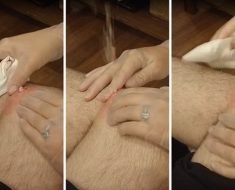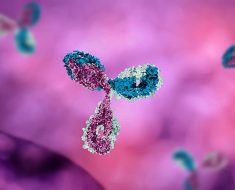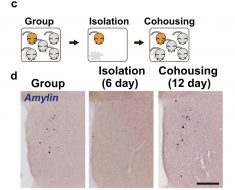ORLANDO, Florida — For patients with heavily pretreated relapsed or refractory multiple myeloma, use of a novel bi-specific antibody designed to minimize the cytokine release syndrome (CRS) was associated with deep and durable clinical responses, and the safety profile was an acceptable.
The findings come from a first-in-human phase 1/2 study of REGN5459, a bispecific antibody targeting the B-cell maturation antigen (BCMA) on myeloma cells with a low-affinity binder to CD3 on T cells.
At the highest dose, the response rate was 90.5%, and a significant proportion of patients achieved “very good partial remissions and higher,” said Attaya Suvannasankha, MD, from Indiana University Simon Cancer Center in Indianapolis, who presented the findings in a briefing and an oral abstract session at the American Association for Cancer Research (AACR) Annual Meeting 2023.
Multiple myeloma remains incurable; patients eventually succumb to disease following relapse, Suvannasankha explained. Last year, another bispecific antibody therapy targeting BCMA and CD3, teclistimab (Tecvayli), was approved by the US Food and Drug Administration to treat multiple myeloma after four or more lines of therapy, but CRS remains a common and potentially fatal side effect of immunotherapy.
The developers of the new antibody, REGN5459, hypothesized that the low-affinity binder would activate T cells to deplete myeloma cells while minimizing CRS.
“The uniqueness of this molecule is its different affinity to the CD3 on the T cells — the binding triggers T-cell activation, which causes plasma cell clearance,” said Suvannasankha. “In the preclinical model, this molecule showed a lower rate of cytokine release, which is a problem with bispecific antibodies as a whole class of drugs.”
In the current trial, 43 patients with relapsed or refractory multiple myeloma who had received three or more prior lines of therapy were enrolled in the phase 1 dose-finding portion of the trial. The patients were followed in the phase 2 dose-expansion, safety, and efficacy portion.
To mitigate CRS, the trialists used a step-up strategy that involved escalating intravenous doses delivered either in split daily doses or single doses delivered back to back on consecutive days. The highest dose tested was 900 mg. No maximum tolerated dose identified, but the recommended dose selected for the trial was 480 mg.
The fixed step-up dosing strategy was introduced after one patient experienced grade 3 CRS following a 10-mg dose on day 1.
At a median follow-up of 9 months, the objective response rate (ORR) in the overall population was 65.1%. Among 21 of the 43 patients who received doses ranging from 480 to 900 mg, the ORR was 90.5%, which included complete remissions or stringent complete remissions in 69.1% of this group.
Suvannasankha noted that these responses occurred early, deepened with time, and were projected to be durable; 78.1% of patients were expected to have continuing responses 12 months after randomization.
Among 19 patients in the total cohort who achieved a complete response or better and for whom data regarding minimal residual disease (MRD) were available, 15 (79%) had no MRD at a detection level of the 10-5 threshold.
Most cases of CRS cases were of grade 1 (46.5%). Grade 2 and grade 3 CRS occurred in 2.3% and 4.7% of patients, respectively. No cases of grade 4 CRS and no deaths attributed to CRS occurred.
Among patients treated at the higher dose levels, 81% experienced CRS, but all events were of grade 1 except one, which was of grade 2.
One case of dose-limiting toxicity ― hypoxia ― occurred in a patient treated with 900 mg, but the maximum tolerated dose was not reached.
The most common treatment-emergent adverse events of any grade were CRS, cough, diarrhea, fatigue, neutropenia, and anemia.
Infections likely related to T-cell exhaustion occurred in 62.8% of patients. Of these, 30.2% were of grade 3 or higher and necessitated hospitalization.
Suvannasankha said that despite the frequency of these events, the severity of infections and treatment disruptions were manageable.
Promise for Earlier Lines of Therapy?
Using the bispecific antibody in earlier lines of therapy, when higher response rates are likely, might allow clinicians to dial back treatment frequency or even give patients a treatment break, Suvannasankha told Medscape Medical News.
And using a bispecific agent earlier might help ameliorate T-cell exhaustion, one of the most significant challenges in immunotherapy, she added. “When you stimulate the T cells, they go fight cancer, but if you keep stimulating them, eventually they sort of get tired,” she explained.
Kenneth Anderson, MD, the invited discussant, spoke more generally about the promises and pitfalls of bispecific tumor engagers, or, as he called them, “BiTEs,” a disputed term that Amgen claims as a registered trademark.
“What’s really is important is we, as a community, need to monitor both the myeloma antigens and the host immune profile to inform how we’re best going to use [bispecific T-cell engagers], the dose, and the schedule, so we can achieve responses while limiting the T-cell exhaustion that’s associated with relapse and this high infectious risk rate,” said Anderson, program director of the Jerome Lipper Multiple Myeloma Center and LeBow Institute for Myeloma Therapeutics at the Dana-Farber Cancer Institute, Boston.
“My prediction is in the future, the BiTEs and/or CAR T cells are going to be incorporated into the initial treatment of myeloma to both achieve durable minimal residual disease responses on the one hand and on the other hand restore memory antimyeloma immunity, and I believe this will allow patients to be disease free and off all therapy,” he said.
Funding for the study was provided by Regeneron Pharmaceuticals. Suvannasankha is on the advisory board of and receives research support from Regenron and other companies. Anderson has disclosed financial relationships with Amgen, Janssen, Pfizer, Mana, Window, and Starton; he is scientific founder of C4Therapeutics, Oncopep, and Raqia Next RNA.
American Association for Cancer Research (AACR) Annual Meeting 2023: Abstract CT013. Presented April 17, 2023.
Neil Osterweil, an award-winning medical journalist, is a long-standing and frequent contributor to Medscape.
For more news, follow Medscape on Facebook, Twitter, Instagram, and YouTube.
Source: Read Full Article





